If you haven’t run into at least a handful of people who are cynical about the state of the blockchain industry and think it’s mostly scams and vaporware, well… you probably haven’t been into crypto for very long.
And the truth is, those cynics have a good point.
We researched the top 100 cryptocurrencies (by market cap) in an effort to learn how many of them actually had working products that are providing real value. The same research done in 2017 may have yielded some truly discouraging results but, even now, the results aren’t exactly stellar.
At the time of writing, just 36 out of the top 100 cryptocurrencies have working products.
Before we share those results with you, it’s important to define what exactly constitutes a working product in the first place.
What is a Working Product?
Considering that blockchain projects are open-source, building a basic blockchain and launching it isn’t a very high bar to set. We wanted to be a bit more rigorous with our criteria.
When researching this article, we evaluated each project’s status, looked at its roadmap, checked its release history, and compared completed features to what the team promises to deliver in the future.
A working product is active and available to the public. Its mainnet has likely been released for some time, bumping the version numbers well above 1.0. Businesses and individuals use it on a daily basis for dapps, smart contracts, or digital currency transactions.
There are many projects in the top 100 that have launched their mainnet, and can claim to have a “working product” by a loose definition. However, we have chosen not to include projects which aren’t actually being used by any significant measure, which means that most of the recently launched mainnets will not yet meet our criteria.
In other words, the mere existence of a product does not necessarily mean that the product is working. After all, is a foundation really doing any work when there is no weight on top of it? Likewise, a dapp platform that has a mainnet but that doesn’t have any noteworthy dapps on top of it isn’t considered “working” by this criteria.
No doubt many people will read through this list, find that their favorite project is missing, and then leave a comment, “What about XYZ project?!?!?” We welcome this feedback, as it’s entirely possible that some projects have stronger user bases than indicated in the prevalent documentation about them.
However, if you do think that we made a mistake, we ask that you provide sources backing up that claim so that we may assess its validity.
With that, let’s get started.
(Editor’s note: Upon further research and consideration, OmiseGO and Verge, which were originally on this list, have been removed as they do not meet the criteria outlined above.)
Cryptocurrencies in the Top 100 With Working Products
Bitcoin (BTC)
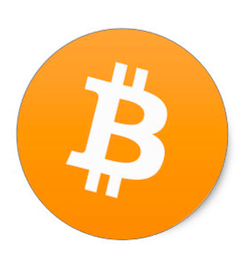
Bitcoin is the cryptocurrency that started it all back in 2009, after the global financial crisis and subsequent bailouts of banks left many people disenfranchised with fiat currency and outdated, insecure financial infrastructure.
Today, Bitcoin is being used for peer-to-peer payments across the globe. More than that, though, it is leading the way towards a future in which financial technology is trustless, secure, resilient, and censorship resistant. Without Bitcoin, this list would not exist.
This updated list of the best bitcoin exchanges you can use to buy Bitcoin (or other cryptocurrency) is a good resource for those looking to own some BTC.
Ethereum (ETH)
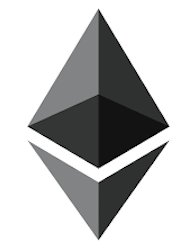
The platform that brought smart contracts to the blockchain, spurring a minor revolution in the cryptocurrency ecosystem. Before Ethereum, Bitcoin and its transaction-oriented design was the central focus of most blockchain projects.
After Ethereum, teams saw the value of decentralized apps (dapps) and smart contracts, and shifted their focus to compensate.
Vitalik Buterin’s Ethereum whitepaper was released in late 2013. The project itself was announced January 2014, with a crowdsale the following July. The system officially went live in July 2015.
Since then, hundreds of businesses, individuals, and blockchain projects have adopted Ethereum as their main smart contracts platform.
Ripple (XRP)
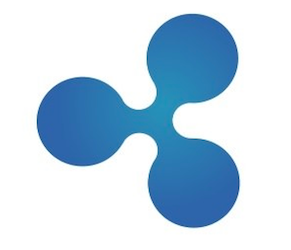
Ripple is focused primarily on one thing: fast and cheap international transactions.
Current banking infrastructure has failed to evolve in the 21st century, such that it still takes 3-5 business days on average for an international transfer to be processed. With just 4 second transaction times and at a fraction of the cost of a wire transfer, Ripple’s working product is already impacting the banking sector.
The big knock against Ripple is that its native token, XRP, is completely unnecessary. Indeed, driving adoption of Ripple’s banking solutions is far easier than getting real-world adoption for XRP.
If you’re interested in seeing a discussion about how XRP adoption will occur, you might find this reddit thread worth a read. Meanwhile, all of us will just have to wait and see whether XRP adoption strategies ultimately come to fruition.
Bitcoin Cash (BCH)
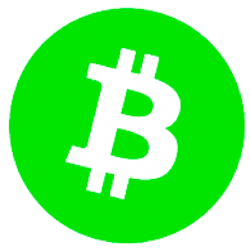
Bitcoin Cash was created in 2017 when the first ever hard fork of the Bitcoin blockchain took place. The split was the result of Bitcoin’s 1MB blocks filling up. Transaction speeds were declining, fees were increasing, and it became clear to the community that the current model wasn’t sustainable for scaling.
In a move that still causes cryptocurrency fights to this day, Bitcoin and Bitcoin Cash soon emerged as separate but similar projects. BCH has 8x the block size of BTC, giving it roughly 8x the transaction throughput. Its fees and transaction times are much faster, as predicted.
Learn more about Bitcoin vs Bitcoin Cash.
Stellar (XLM)
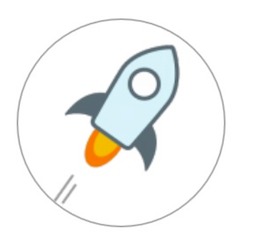
The Stellar project and its associated Lumens (XLM) token was forked from the Ripple protocol in 2014. Stellar has come into its own since then, providing a blockchain connection service for fiat transactions between banks, payment systems, and people. Stellar is fast and reliable, and it works with practically no fees for the end-user.
Stellar is a payments system, meaning its job is to move money as efficiently as possible. Partnerships with banks and financial institutions were key in evaluating its status, as was the ability to actually send money using the network.
Several non-profits and commercial entities have agreed to use Stellar as part of their financial infrastructure. Recently, the team partnered with IBM and KlickEx to facilitate cross-border transactions in the South Pacific and announced an affiliate with Keybase to streamline international transactions.
Stellar also has projects being built on its network by major established entities. IBM’s blockchain division is using XLM for their payments infrastructure, for example, and the Veridium startup is working with both organizations to tokenize its carbon credits market.
Litecoin (LTC)
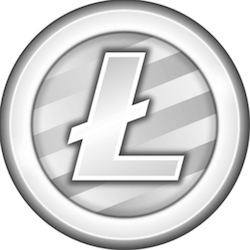
Litecoin is a Bitcoin fork that was created in 2011 by Charlie Lee as a cheaper and faster (2.5 minute block time instead of 10) alternative to Bitcoin. This is accomplished predominantly because Litecoin uses a Scrypt hashing algorithm instead of the SHA-256 algorithm used by Bitcoin.
It’s common to hear Litecoin called “digital silver” to Bitcoin’s “digital gold,” and in reality Litecoin does not really expand upon the functionality of Bitcoin in a significant way so much as it makes different tradeoffs.
That being said, it does succeed in being cheaper and faster to use than BTC, which has led to it being accepted by hundreds of merchants and thus making Litecoin one of the most widely used cryptocurrencies for digital payments.
Monero (XMR)
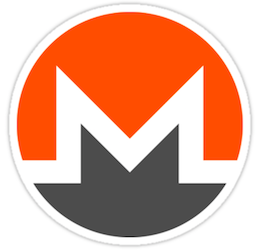
Released in 2014 as a fork of Bytecoin, Monero has since made a name for itself as the most popular privacy coin on the market.
Most cryptocurrencies offer little in the form of anonymity. Monero was built for privacy from the ground-up, featuring stealth addresses, ring signatures, and complete coin fungibility. All of this adds up to a near-perfect cloak of anonymity, allowing Monero users to conduct transactions without exposing their identity.
Monero has had steady growth over the years thanks to a dedicated team of developers and an active community. The project continues to evolve with new privacy features and improved transaction security.
NEO (NEO)

NEO was founded in 2014 as one of the earliest smart contract platforms, giving it a wide breadth of possible functionality. The platform’s strongest use case is digitizing traditional assets so that they can be easily tracked and exchanged on the blockchain.
NEO is also well-known as the “Chinese Ethereum,” and the fact that it is a Chinese-based project does seem to make Chinese dapp developers somewhat more likely to build on top of it than other platforms.
In fact, NEO has already supported dozens of ICOs and remains one of the predominant platforms for supporting smart contracts and dapps.
Binance Coin (BNB)

Binance Coin is an exchange token used to reduce trading fees on the Binance platform.
Users can opt to pay exchange, listing, and withdrawal fees using BNB and enjoy as much as a 50% discount on all charges. This turns out to be a powerful incentive for purchasing and holding BNB, as what trader doesn’t enjoy saving money on transactions?
Binance Coin is an ERC-20 token that runs on the Ethereum blockchain. Its purpose is extremely limited, but because such a vast number of Binance users transact with it every day, it qualifies as a working and active product.
Zcash (ZEC)
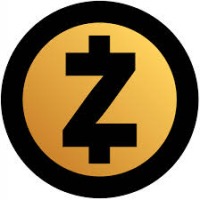
Zcash is another immensely popular privacy coin that often cracks the top 20 cryptocurrencies. It uses the tagline “internet money” and promises to fully protect the privacy of transactions with zero-knowledge cryptography.
Zcash provides anonymity by shielding transactions on the blockchain, preventing anyone from seeing the sender, recipient, or value of each transaction. The technology is so effective the Ethereum team is investigating it to enable anonymous transactions on their network.
Zcash has grown in leaps and bounds in 2018. The dev team published a roadmap through the year 2020, which includes a major features upgrade in the October 2018 Sapling release. Coinbase is also considering listing Zcash, which is a huge boost for any cryptocurrency.
Qtum (QTUM)

Qtum is a smart contracts platform similar to Ethereum, only with a stronger focus on value transfers and decentralized apps. It’s meant to be something of a hybrid between Bitcoin and Ethereum, allowing businesses to build smart contracts on the platform or just focus on cryptocurrency transactions.
Qtum launched in March 2017, and dashed straight to the top. The initial offering sold over $10 million in tokens after just 90 minutes. The project differentiated itself by providing a rare Proof-of-Stake smart contracts platform designed to compensate for some of Ethereum’s shortcomings, including lack of compatibility for mobile devices.
Qtum released its mainnet in September 2017, opening the doors to a fully functional smart contract and dapps platform. Several projects already have an established presence on the network. One of the more exciting ones is Space Chain, which aims to create an open-source satellite network anyone can use for data transmission, storage, and development.
0x Protocol (ZRX)

0x Protocol has one of the most important working products in the entire Ethereum ecosystem. It is a permissionless, open-source protocol that facilitates trustless exchanges of Ethereum tokens through relayers and dapps that build on top of the protocol.
Not only has 0x been providing this functionality for over a year now, but they’ve been working to expand the protocol functionality significantly since that initial launch. In 0x protocol 2.0 and beyond, it will be possible to trade tokens built on standards besides ERC-20, including non-fungible ERC-721 tokens.
In a market full of scams and vaporware, 0x’s valuable contributions to the Ethereum ecosystem have made it one of the best performing cryptocurrencies of 2018.
Decred (DCR)
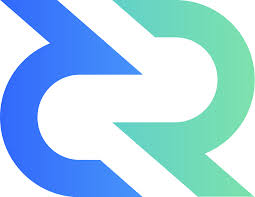
Founded in 2015 by former Bitcoin developers, Decred’s most important working product is its solution to Bitcoin’s biggest problem. No, not scalability… blockchain governance.
You see, early Bitcoiners have been debating block size limitations and the efficacy of other scalability solutions like the Lightning Network for years, even though the problem of scalability really only became discussed in the mainstream in 2017.
With its community-based governance model and strong adherence to the core ethos of decentralization, Decred is built to evolve and improve rapidly. That means that it’s equipped to handle not only the scalability problem today, but other big problems that might arise down the line.
When you have poor governance, it is an arduous process making any upgrades to a project, no matter how necessary they may seem to the majority of coin holders. Decred’s best-in-class and still improving governance model give it an intriguing case to be a leader in digital payments for a long time to come.
Steem (STEEM)

Steem is the cryptocurrency that powers Steemit, a decentralized social media platform that incentivizes user participation through micropayments. Think of it like Reddit, only instead of just upvoting or downvoting posts, users can actually reward creators for their effort.
Steem is a functional cryptocurrency used exclusively on the Steemit platform. That gives it something of a limited use, but seeing as how Steemit is live and boasts a few hundred thousand users, it’s hard to argue it isn’t a working product. Some people may even be earning money using Steemit.
Siacoin (SIA)

Siacoin is one of the leaders in decentralized cloud storage, a more secure and affordable alternative to centralized cloud storage solutions like Amazon S3, Google Drive, iCloud, Dropbox, and others.
Sia 1.0 was launched in June 2016, and has achieved considerable adoption since then. With the $200 billion cloud storage market widely seen as one of the spaces most ripe for blockchain disruption, Sia has gotten off to a nice start by offering a functional decentralized cloud storage platform for over 2 years.
Augur (REP)
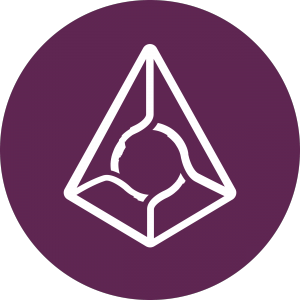
Augur is one of the most recently launched products on this list. The platform mainnet went live in early July 2018, bringing to fruition almost 4 years of post-ICO work.
Augur is a decentralized prediction market that uses game theory to generate crowd-sourced insights. Essentially, thousands of people working together have shown the remarkable ability to forecast outcomes.
With Augur, users can put REP tokens as bets on these predictions, essentially creating a form of “useful social gambling.”
Augur’s release was a long time coming. The project started as far back as 2014, nearly a year before the ICO. The creators cite the complexity of Augur’s smart contracts as the chief cause of the lengthy development time.
Regardless of its past, Augur is now a live product with a bright future. Over 300 predictions have already been made, with the largest winning payout hitting $20,000. Betting volume even exceeded $1 million within the first weeks of launch.
Basic Attention Token (BAT)

Basic Attention Token was one of the easiest projects to include on this list. That’s because its working product, Brave Browser, has more than 3 million active users between its mobile and desktop platforms, making it one of the most widely-used working products in the blockchain space.
Not only is Brave Browser functional, it’s the only browser on the market that has built-in ad-blocking and tracker blocking, making the browsing experience both cleaner and faster than what you get with other popular browsers like Chrome and Firefox.
The future remains uncertain for the BAT token itself, as its adoption depends heavily on whether or not advertisers buy-in to the Brave model, as well as how willing Brave users are to be shown relevant ads and to pass along the BAT they earn to content publishers.
Given Brave’s success in just a short time since being launched, though, the future does appear promising for BAT. Download the Brave Browser.
Nano (XRB)

Nano (formerly RaiBlocks) is all about scalability. The coin has nearly instant transactions with a completely fee-less structure. The platform accomplishes this by creating a unique blockchain for every account, preventing bloat and allowing for practically infinite scalability.
Nano’s motto of “do one thing and do it well” has gotten them a long way. The team doesn’t have to deal with scaling or slowdown issues thanks to the underlying structure of the project, allowing its roadmap to focus on wallet updates and outreach. This is one cryptocurrency that’s essentially feature complete, and it has been for some time.
Golem (GNT)

Golem has set out to be the Airbnb of computing resources. Have you ever needed extra GPU power to finish up a render? How about processing scientific data similar to the SETI@home project?
Even if you don’t have those needs, a lot of groups do. Golem aims to provide easy access to those resources, all of which are rentable for a small cryptocurrency fee.
Golem hit the mainnet launch button in April 2018, and was met with a fair amount of fanfare. One of the main goals for the feature-incomplete launch was to push the product out so real users could put it to work.
The team was interested in strengthening their interactions with end users to help guide the future of the platform. The team has several major milestones planned for the coming months, so the mainnet release is only just the beginning.
Pundi X (NPXS)
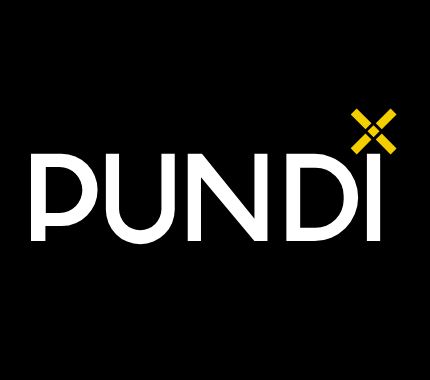
Pundi X has been shooting up the market cap rankings so far in Q3 2018, and they also happen to have a working product that just recently became available to retailers.
The primary Pundi X product is a point-of-sale (POS) device that enables quick and easy mobile transactions for both fiat and cryptocurrencies. 500 POS devices are already being used by retailers in Asia, and there are thousands more scheduled to be distributed in the coming months.
In addition, Pundi X also offers XPASS cards, cryptocurrency credit cards that can work in place of mobile apps for making digital payments.
What makes the Pundi X project noteworthy is that it enables consumers to pay retailers in cryptocurrencies like BTC and ETH, and it immediately converts the payments into local fiat currencies so that retailers don’t need to worry about price volatility of the cryptocurrencies.
This makes it significantly easier for people to use cryptocurrencies in their daily lives, making Pundi X an exciting project for blockchain enthusiasts who are looking for signs of future mass adoption.
Waves (WAVES)

Waves was the first ever blockchain platform that made it possible for anybody — regardless of their programming experience — to create blockchain tokens. Additionally, Waves has a decentralized exchange where tokens can be traded and exchanged with fiat currencies.
Since the project’s first releases in 2016, Waves has gone on to make their DEX accessible from mobile phones and expanded its functionality significantly, while also building several strategic partnerships to help grow the Waves community and user base.
Ultimately, though, the Waves Client is the project’s most important working product, as it is what allows tokens to be issued, stored, sent, and exchanged among users.
KuCoin Shares (KCS)

Similar to Binance Coin, KuCoin Shares is an exchange token that can be used to pay reduced fees on cryptocurrency trades. KCS has the added bonus of paying dividends to long-term hodlers, as well, paying out a 5% ROI for most users.
The nature of KuCoin Shares is one of the reasons the KuCoin exchange has gotten so much attention since it appeared on the scene. The tokens themselves are limited in scope, of course, but the sheer number of people using them for trades and buying them for passive income is enormous.
Wanchain (WAN)
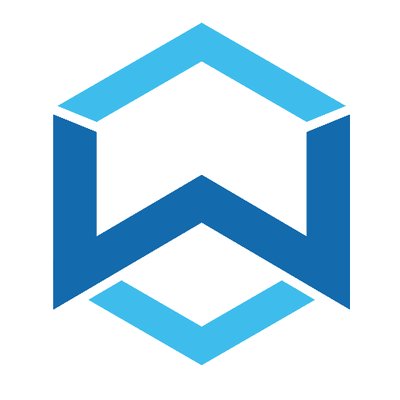
Wanchain aims to build new and improved financial infrastructure to seamlessly connect the digital economy through blockchain interoperability. The use cases for Wanchain’s network are vast, and they include decentralized financial services, supply chain logistics, medical data sharing and security, digital ID management, and more.
With the recently released Wanchain 2.0, it is now possible to transfer Ether cross-chain using Wanchain’s Ethereum Mapping Token, WETH.
Ethereum interoperability is just the start, though, and it’s expected that cross-chain support for Bitcoin and a couple of ERC-20 tokens will follow before the end of 2018.
Komodo (KMD)
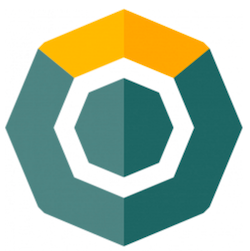
Komodo is a fork of Zcash that uses the same zk-snark cryptography to hide information about transaction participants and amounts being sent.
Functional privacy coins aren’t unique (there are a handful on this list) but Komodo’s privacy features are just a small piece of what the project does. In fact, Komodo’s full range of functionality makes it better classified as a platform cryptocurrency than just a privacy coin, and it’s one of the most unique cryptocurrencies in the entire space.
For one, Komodo was the first ever decentralized initial coin offering. Moreover, Komodo helps other developers to build their own customizable blockchain solutions, from building and securing independent blockchains and launching decentralized ICOs, to integrating projects into the cryptocurrency ecosystem.
KMD would already qualify as a working product for its anonymity features on digital payments, but add the end-to-end blockchain building solution and it’s clear that Komodo is making meaningful contributions to the cryptocurrency ecosystem.
Ardor (ARDR)
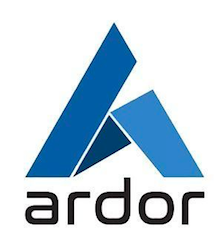
Ardor is a scalable blockchain platform that allows businesses to create their own child chains and tokens with relative ease. This helps keep blockchain bloat to a minimum and provides multiple transactional tokens without sacrificing core chain transactions. It’s also a remarkably energy efficient platform that uses Proof-of-Stake to power consensus.
Ardor launched its mainnet on January 1, 2018 after a full year in testnet status. Its core features are largely in place, with the roadmap set to improve things like scalability and snapshotting.
The Blockchain-as-a-Service-platform hosts a few projects of its own, including the Ignis ICO, which was the first child chain on the mainnet.
Huobi Token (HT)
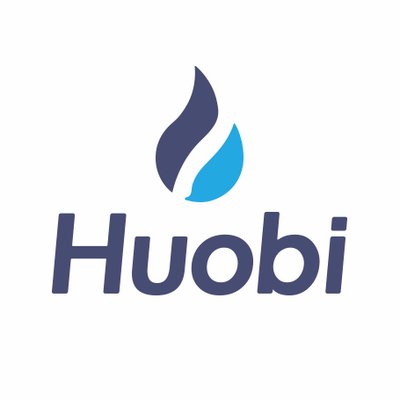
Huobi is a digital asset exchange platform founded back in 2013, now offering well over 250 different trading pairs. The Huobi Token, meanwhile, is an ERC-20 token that is used on the exchange for discounts on trading fees of up to 50%.
In addition, 20% of the income generated on the Huboi Pro trading platform is used to buy back HT on the open market.
Unlike most buyback programs, the main purpose of Huobi’s program isn’t to reduce the circulating supply of HT. Rather, the HT that is bought back goes into a Huobi Investor Protection Fund, which is used to compensate Huobi users if they lose coins or tokens on the platform, as well as to ensure market stability and protect investor interests.
Horizen (ZEN)

Horizen is yet another privacy coin with a working product in the Top 100, originally launched in the first half of 2017.
What makes Horizen unique is that it’s the first blockchain with Transport Layer Security (TLS) integration for node encryption, making communication on the Horizen network both private and highly secure.
Some other interesting parts of the Horizen product include Tor nodes and built-in chat messaging services. In the future, the Horizen team will deliver a DAO Treasury Protocol-level Voting System as well as a scalability solution to handle greater transaction volume.
Kyber Network (KNC)
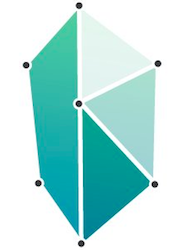
Kyber Network launched their mainnet in Q1 2018, enabling instantaneous and secure inter-token settlements through a Decentralized Liquidity Network.
It’s currently possible to swap ERC-20 tokens on the network with just a few mouse clicks, giving it some basic functionality that is already being used to improve liquidity for Ethereum tokens.
In the future, however, Kyber Network will expand its functionality significantly in an effort to seamlessly connect dapps, DEXes, protocols, payment systems, token teams, investors, fund managers, and digital wallets.
Bancor (BNT)

Bancor is a liquidity provider that enables users to exchange tokens without the need for a third-party to be involved in financing the transaction.
Gaining liquidity is incredibly important for young cryptocurrency projects, as a lack of liquidity makes it risky for investors to buy a considerable amount of a given coin or token, knowing that it might be exceedingly difficult to sell should they wish to.
Bancor’s technology makes it possible to convert one token to another, so that investors can be confident that they won’t be stuck involuntarily holding a cryptocurrency that they want to sell. This functionality makes the Bancor Liquidity Network one of the most promising working products on this list, and one that has already achieved a good deal of adoption.
Loom Network (LOOM)
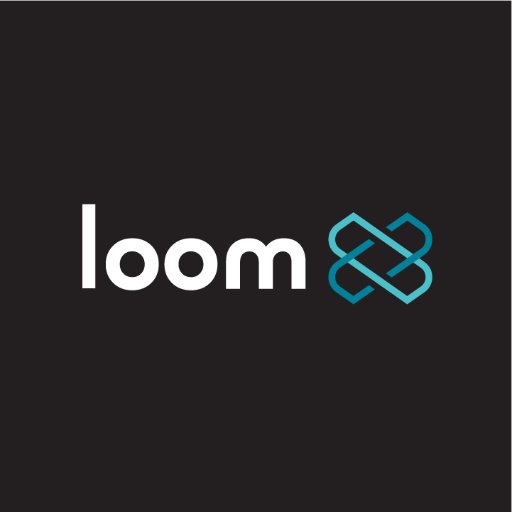
Loom Network is still less than a year old, having been founded in October 2017. However, they have accomplished a lot in that short time span, including having launched numerous tools to help software developers learn how to build blockchain solutions.
The most important of these tools — and Loom’s biggest working product — is the Loom software development kit (SDK).
However, Loom Network is far more than just a simple blockchain coding academy. It is also a production-ready scalability solution for Ethereum, as the Loom developer toolkit helps programmers to build highly scalable dapps which connect to the Ethereum blockchain through special side chains called DappChains.
The project may still be in its infancy, but Loom Network is already contributing more utility to the cryptocurrency ecosystem than the vast majority of other cryptocurrency projects.
Polymath (POLY)

Polymath wants to be the world’s go-to resource for security tokens on the blockchain. What Ethereum did for tokens, Polymath will do for securities.
The advantages of this are enormous, but the Polymath team likes to point to 24/7 market access, the elimination of middlemen, and trading access for 2 billion unbanked people around the world as the chief benefits of their efforts.
The Polymath platform launched in October 2017, and has since released a new security token every week, attracting investors and traders alike. It’s not as exciting of a project as some other blockchain tech, but it’s delivering on its promises with a working product.
Bibox Token (BIX)
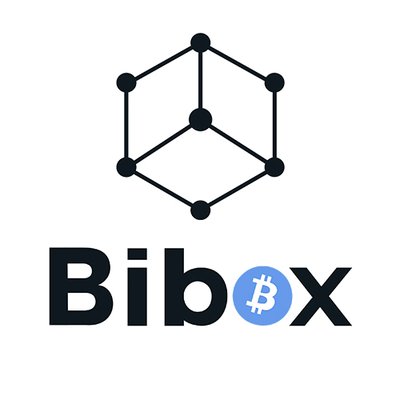
Bibox is a encrypted digital asset exchange whose primary differentiator from other crypto exchanges is that it integrates AI technology.
The purpose of the AI is to help Bibox’s traders, which it does by providing quantitative computation and analysis of trading activity, personalized risk allocation strategy, speech recognition, and objective analysis of the various coins and tokens listed on the exchange.
The Bibox exchange first launched back in November 2017. It has operation centers in the US, Canada, mainland China, Hong Kong, Japan, and Estonia. BIX token holders receive 20% of the exchange profits, and also get discounts on trading fees, similar to Binance.
What’s your favorite working product in the crypto space? Let us know in the comments!
Related: The Periodic Table of Cryptocurrencies
Download the Brave Browser.


